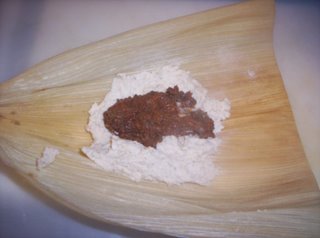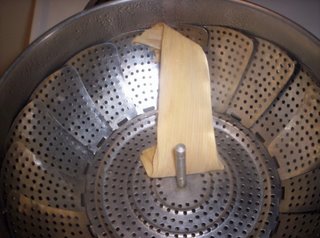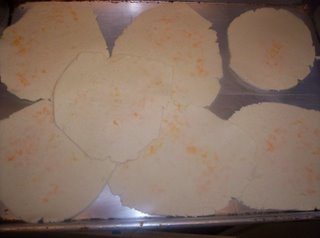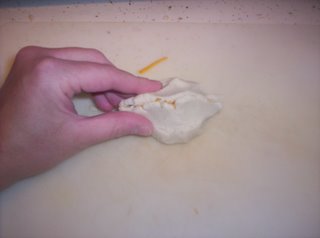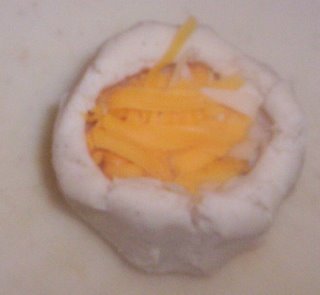Salvadoran Pupusas are becoming a popular take-out item in the US. Here's how to make them at home. Because they are not fried in oil, and have only a small amount of cheese, they are a less horrible snack than they first appear.
For the Pupusas;
-2 Cups Masa (corn flour-NOT cornmeal)
-1 Cup + Warm Water
-Filling(grated cheese:farmer's, feta, mixture of cottage cheese and mozarealla, etc.)
In a large bowl add water slowly to flour until a soft dough is made. It is soft enough when it no longer cracks at edges when you press down. It should have a spongy feel. Cover, at let it rest for 5-10 min.
Roll dough into a log and divide into eight equal parts that are then rolled into balls.
In the centre of each ball, make an indentation and fill with cheese. Pinch it closed and pat between hands to flatten before GENTLY rolling out into rounds roughly 1.4 inch thick. If it tears, cut a piece from the edge and do a patch repair. When they are all rolled out and set aside on a cookie sheet, cover to keep from drying out as you fry them one at a time.
Heat an ungreased skillet (I use a Scanpan, but cast iron works well too. Avoid using teflon at this heat as I've read recently where all sorts of horrible things can happen when it's over-heated) to high heat. Cook the pupusas 1-2 minutes on each side until they are browned and begin to blister.
Keep finished pupusas warm in a plate covered with foil.
Serve with sour cream, salsa and Curtido (recipe below)
Curtido:
1/2 head cabbage 3 grated carrots
4 cups boiling water
5-6 minced green onions (depending on size)
1/2 cup white vinegar
1/2 cup water
2 tablespoons dried oregano
1 teaspoon dried red pepper flakes
2 tablespoons salad oil
1 tablespoon sugar
1 teaspoon salt
Place cabbage and carrots in a bowl and cover with boiling water. Let stand five minutes. Drain well. Mix with the rest and chill well before serving.



